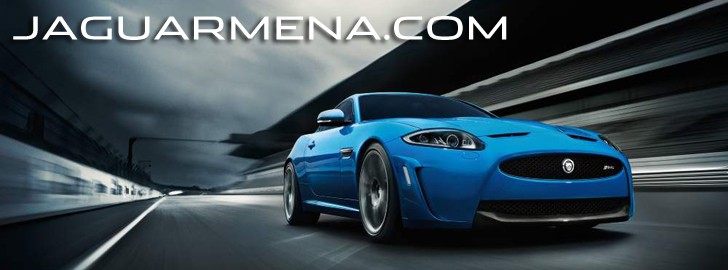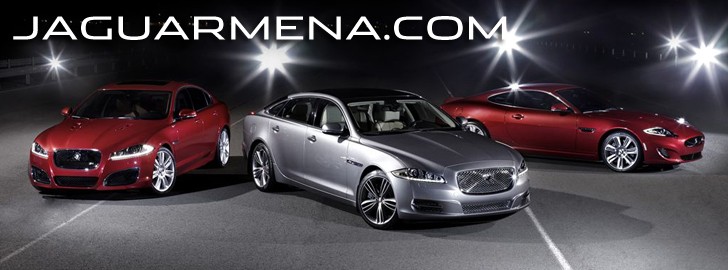F-TYPE | Exterior Design
Visual appeal is fundamental to Jaguars and, as such, the F-TYPE is immediately recognisable.
The dynamic visual message begins with the formidable grille, which takes the form established by Jaguar’s bold saloons, the XF and XJ, and reshapes it to create a sports car signature, as seen in the stunning C-X16 concept. The grille shape is softer and wider and leans slightly forward to create a suggestion of motion even when the car is stationary. The mesh in the grille and side vents is a new, hexagonal design which gives greater form and depth in comparison to the previous diagonal motif.
The grille is flanked by twin ‘shark gill’ openings, intended to give as much visual impact as possible and ensure that the F-TYPE has instant ‘rear view mirror’ recognition on the road. It is from these vents and the grille that the essential form of the car flows and begins to take shape. The one-piece clamshell bonnet stretches back from the leading edge of the grille, incorporating the signature Jaguar bonnet bulge and twin vents.
The blade dividing the shark gill openings at the front of the car marks the beginning of one of the ‘heartlines’ that define, in just two bold strokes, both the profile and plan view of the F-TYPE. This first heartline runs up the face of the gill and forms the sharp top crease of the wing line, which, when viewed from the driver’s seat provides not only a visual clue to the potency of the engine under the sculpted bonnet but allows the car to be placed more accurately in a corner.
“Every aspect of a sports car, dimensionally, allows us to create something that is visually exciting; visceral as well as physical. To me the definition of sports car design is being fit for purpose, wrapping up the occupants and mechanicals in the most exciting, beautiful and sensual package possible with no unnecessary surfaces or adornment.
“A piece of design should tell a story and this is why every line in the F-TYPE has a start, a direction and a conclusion. If you approach every line individually and get it as aesthetically correct as possible, get the dimensions right, it will stand the test of time.”
Ian Callum, Director of Design, Jaguar
The importance of this heartline is underscored by the headlamp design which by running vertically rather than horizontally leads the eye naturally up and along the crease rather than interrupting it. This is one of the examples in which technology has facilitated the design language of the F-TYPE – the compact bi-xenon unit requires just one projector unit while the J-Blade LED running lights further emphasise the graphic of the heartline running through the lamp.
The heartline continues along the top of the wing before dipping down into the door line and elegantly disappearing into the rear wing. This sweeping line, mirrored by the feature line that runs back from the side vent and the ‘lightcatcher’ surface detailing above the sill instils a sense of speed and spontaneity to the profile of the car. The presence of the lightcatcher also allows the door surface to wrap around the side of the car, creating a fuselage effect. The top of the side vent is formed by the lower edge of the clamshell bonnet. The vent itself is stamped with the Jaguar name.
A further example of using technology in delivering design purity is found in the deployable door handles. Until activated by either unlocking the car with the key fob or the driver pressing a touch sensitive area of the handle, these remain flush with the door panel. Stamped with the Jaguar name, their automatic deployment provides a mechanical ‘handshake’, inviting the driver and passenger to enter. Once on the move, the handles retract, creating an aerodynamically uninterrupted surface.
The second heartline begins its journey at the rear edge of the door, swelling outwards and upwards to create a strong haunch, emphasising that it is the rear wheels that are providing the motive power. The heartline then drops down and wraps around the sweeping tail in an unbroken curve, forming a low, wide and elegant tail.
In order to achieve this important aesthetic element, the F-TYPE features a hidden rear spoiler which raises at speed in order to balance front and rear lift. The spoiler raises at 100 km/h and then lowers to fit flush when the speed drops below 65 km/h. Further discreet aerodynamic aids are provided by a front splitter and a sculpted rear valance to ensure the car’s balanced weight distribution is echoed in the way it cleaves the air.
The width of the tail is emphasised by the slim, full-LED lamps that wrap all the way around the wings almost to the trailing edge of the rear wheelarches. These lamps feature hidden-until-lit technology, appearing solid until one of their functions is activated.
In order to achieve such elegant proportions, the reversing and fog lamps are mounted in the lower valance. Reflecting the manner in which the front grille leans forward, the tail actually tucks inwards, creating the impression that the car is actively waiting to leap forward into action.
The tailpipes provide an opportunity to differentiate between the V6 and V8 variants. V6 models feature a twin centre tailpipe treatment in a nod to past Jaguar sports cars. The biggest and boldest exhaust finishers ever fitted to a Jaguar, these are stamped from one piece of stainless steel creating an unbroken gleaming surface. The V8 model is marked by the use of the signature quad, outboard-mounted tailpipes as seen on XKR and XFR models. A different rear valance allows for the changed exhaust positioning.
Further detail differentiation between the three variants is found in the trim used to highlight elements of the exterior design. The V6 model is marked by satin black trim elements in the grilles, vents, front splitter and rear valance while the two ‘S’ models receive gloss black finishes in these areas. The V6 model sits as standard on 18-inch alloys, with 19-inch and 20-inch wheels optional, these being standard for the S and V8 S respectively. The range-topping V8 S also receives additional aerodynamic addenda – front vanes beneath the shark gills and flat side sill extensions – to aid its stability at the very high speeds of which it is capable.
Fitting with its intent as a focused sports car, the F-TYPE is equipped with a traditional fabric, rather than metal, convertible roof. This not only represents a significant weight saving but optimises packaging and helps maintain a low centre of gravity for greater agility. The hood itself can be fully raised or lowered in just 12 seconds at speeds of up to 50km/h. Its multi-layer construction includes a thick Thinsulate lining for optimal thermal and sound insulating properties.
Find more Photos of the F-TYPE in our GALLERY.











